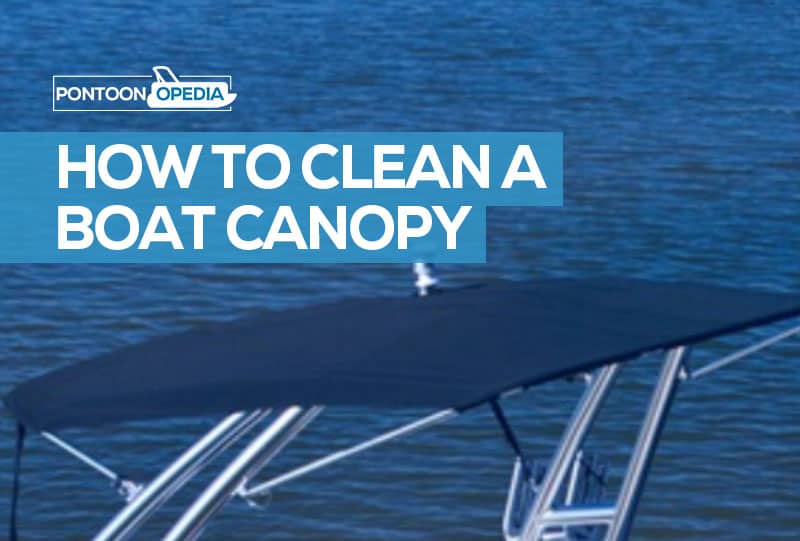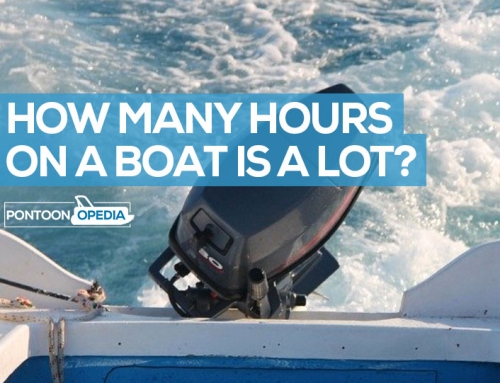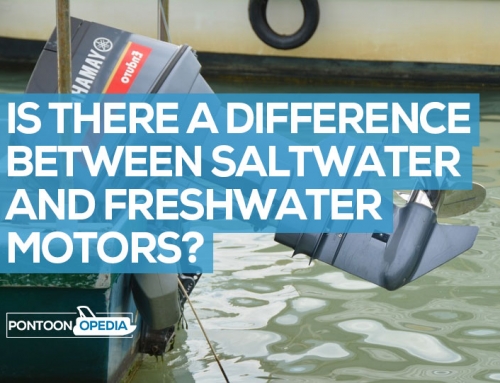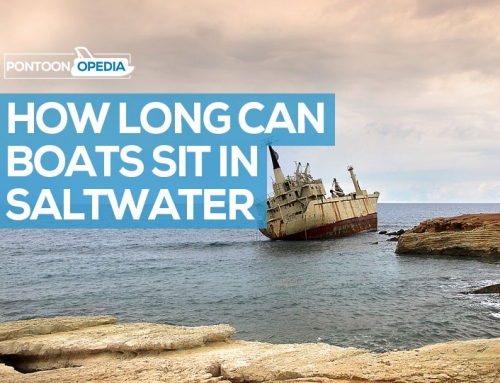There’s nothing quite like a dirty canopy or canvas to ruin the look of your boat (and your day), but don’t order a new one just yet. Whilst, yes, canvas and vinyl boat canopies can be very hard to clean, especially stubborn stains and mildew, it’s not impossible providing you do it the best way.
A good cleaning will go a long way to making your canopy look like new.
Table of Contents
How to clean a boat canopy (vinyl or canvas)
Here’s how to clean mold off a boat canopy, get stains off, and have it looking almost as good as it was when you first bought your boat.
- Remove the fabric from the boat and lay it out flat.
- Remove any loose debris and hose down the fabric.
- Using soapy water and a soft-bristled brush, scrub the fabric.
Allow the soap to sit for about 20 minutes. - Rinse away the soap.
- If stains or mildew persist, use a specialty cleaner for the trouble spots.
- Allow the canvas to dry completely.
The cleaning process for a boat canopy or canvas is simple. With some simple tools, an afternoon, and some elbow grease, you can make your dingy, dirty canopy like new.
In this article, I’ll give you my cleaning method that won’t hard the canopy vinyl or canvas.
Step by step detailed cleaning instructions
The fabrics used for boat canopies are specially treated so that they are waterproof, and you wouldn’t want it any other way. It helps keep the fabric in good shape for longer, but that doesn’t mean it is impervious to getting dirty with mold, stains, black streaks and so on.
When it does need washing, marine fabric can be more difficult because you can’t use a washing machine or harsh chemicals.
So, how do you clean a boat canopy?
Step 1: Remove the canopy
It is best to remove the fabric from the boat, if at all possible. Having the fabric on the ground will allow you to get into every part of the fabric with ease, and you will be able to scrub harder without damaging it.
This is also a great time to inspect the canopy’s hardware and clean any of the railings that hold it up.
Depending on where you’re doing the scrubbing, it might be a good idea to place a tarp under the canvas to protect it during the cleaning process.
For a light cleaning, it isn’t necessary to remove the canopy.
Step 2: Remove loose debris and hose down the canopy
There’s no point scrubbing away dirt that could just be pushed off the fabric. Here’s the process I recommend for doing this.
- Using a soft-bristled brush or broom, remove any loose debris. The bristles will pull up any of the loose stuff that is just hanging on.
- Alternatively, you could give the fabric a good shake and brush away anything that’s left behind with your hand.
- Hose down the fabric to remove any remaining dirt, and to prepare the canvas for the soapy water scrub.
Step 3: Scrub the vinyl or canvas
Now it’s time to get to work, but before you start scrubbing, you’ll need to make sure you are using a soap that won’t hurt the fabric or the environment.
Use the right type of cleaning fluid / soap
The most important part of this step is picking the right soap. You can’t use just any old detergent or dish soap on marine fabric because it could reduce the effectiveness of the waterproofing treatment.
I recommend using a mild detergent for this step such as Ivory Snow (view on Amazon).
If you plan to use dish soap, selecting something that does not contain a powerful degreaser. Also, choose a phosphate-free dish detergent if you are near a waterway.
Phosphates feed and encourage the growth of oxygen-consuming algae, making it hard for the fish in the area to thrive.
What NOT to Use:
- Detergents that contain bleach.
- Detergents that contain ammonia.
- Other harsh chemicals.
Mix up the soapy water
You’ll find a lot of recommendations for cleaning with simply soapy water on the internet, but a lot of places don’t tell you what it means. That’s because soapy water is an art more than a science.
A good rule of thumb to follow is about a quarter cup per gallon, but just give it a good squirt and swish it around. You don’t want too many bubbles as it makes it hard to work with and more difficult to rinse out later, but you still want it to have enough that it cleans effectively.
Scrub the canopy
Now it’s time to break out the elbow grease. Dunk a soft-bristled brush in your bucket of soapy water and scrub the fabric. You shouldn’t need to scrub too hard. The soap should do a lot of the heavy lifting for you.
Let it sit
Once you’ve scrubbed the entire boat canvas clean, you should let the soap sit for about 20 minutes. Some people like to leave it for an hour, some only 15 minutes, so it doesn’t have to be exact.
Step 4: Rinse the canopy down
Now you need to rinse away all that soap you just soaked into the fabric. All you need is a garden hose and some patience.
It is important to make sure all the soap rinses out of the fabric as soapy residues can collect grime and leave your fabric looking dingy.
Step 5: Get tougher on the stains and mildew
In some cases, a simple cleaning is all you need to remove any stains or mildew, but it isn’t always enough. If a stain or mildew persists after cleaning, you will need to treat the affected area with a cleaner.
I recommend Star Brite Mold and Mildew Stain Remover (view on Amazon) which is great for cleaning boat canopies of all types including canvas and vinyl designs.
Here’s how you use it:
- Spray the stained area and scrub.
- Allow it to sit for a few minutes.
- Rinse it away.
- If the stain persists, try a second treatment.
After you’ve cleaned one side of the fabric completely, it may be necessary to flip the fabric and clean the other side.
Step 6: Let it all dry
Once the boat canopy fabric is clean, you should let it dry completely before reinstalling it. Mildew and mold thrive in wet environments, so ensuring a thorough dry will help prevent the mold from recurring.
Can you use bleach to clean a boat canopy?
Before using bleach on any type of marine fabric, you should consult the manufacturer. Some fabrics and hardware are designed to handle occasional bleaching, and some are definitely not.
In general, it is best to avoid bleach if you can, as it is hard on fabric, and it isn’t good for you or the environment to be working with it.
Can you pressure wash a boat canopy?
I don’t recommend using a pressure washer on your fabric unless you’re using a very light setting, and the fabric is not installed on the boat. It’s very easy to tear through and can have disastrous consequences.
The extreme pressure of the water coming out of a pressure washer can damage the cover. If it is installed, it could rip a hole right through it.
So, if you want to try a pressure washer, use the lightest setting that is effective and be sure the fabric is flat against the ground.
We find that a garden hose works plenty well without damaging the fabric.
How often should you clean a boat canopy?
Thankfully, you don’t have to do this deep cleaning method all that often, but you should perform regular light cleanings. Here are some guidelines:
- Wipe down and spot clean the canopy after every trip out.
- If you use your boat frequently, deep cleaning should be done once a month.
- If it isn’t dirty, don’t clean it. Cleaning can be hard on fabrics. So only clean the canopy as necessary.
- Definitely do at least one deep cleaning at the end of every boating season.
Really, if you think it’s time to clean it, it probably is. So, don’t put it off because the longer the stains sit, the harder they’ll be to get out.
You might also like…
I regularly blog about boat cleaning, and here are some of my personal favorites from down the years:







